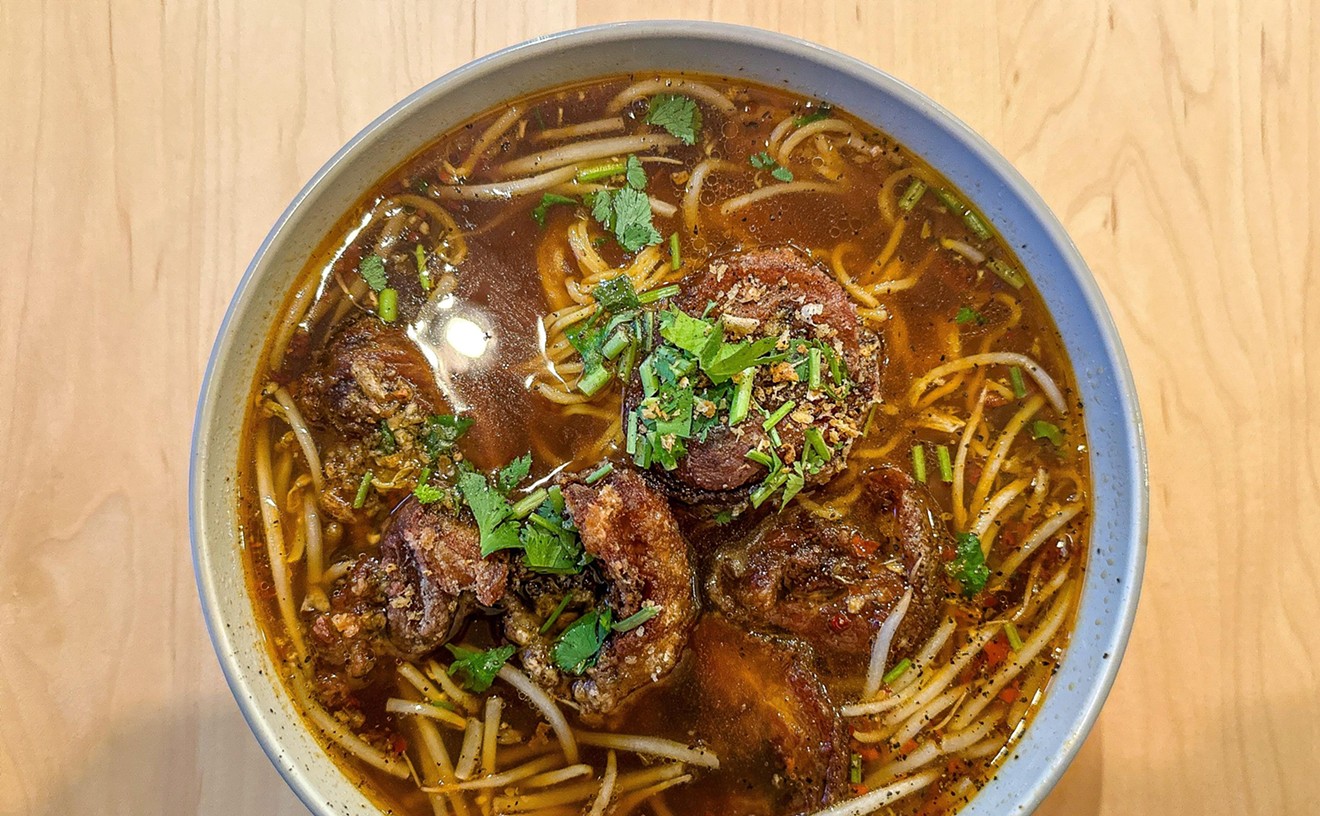In Venezuela, it's called Carne Mechada. In the Caribbean, it's known
as Ropa Vieja. The Mexican version goes by the name Carne Deshebrada.
In any case, shredded beef is an important component of the cuisines of
several south-of-the-border countries. Here, we are talking about marinated,
slow-cooked moist beef, as opposed to machacado, which is made from dried
beef and is similar to beef jerky. As is the case with so many Mexican
meats, carne deshebrada is used as filling for tacos, burritos and tortas.
No self-respecting taqueria patron would be caught dead without the
disheveled delight on his menu.
Speaking of which, Bill Addison, the food writer who delighted us for
several years with his swarthy critiques in The Dallas Morning News, was
once tasked to investigate the Bay Area taquerias when he worked for the San
Francisco Chronicle. He visited 85 (you read that correctly) joints
over the span of 10 weeks, and learned fairly quickly how to tell a
promising establishment from one that was off its game. Not surprisingly,
the condition of the carne played an important part:
"Old, gray meat that had lingered on the steam table...was the most common
sacrilege. Carnitas and carne asada shouldn't simply taste like vague,
high-on-the-food chain protein. They should have a distinct, meaty
robustness that helps them stand out from the other ingredients."
What cut of meat works best for deshebrada? In her article, "Choice Cut or
Mystery Meat? A Guide to Mexican Butcher Shops: Part One - Beef," food writer
Karen Hursch Graber touts the benefits of using flank: "The
flank is located under the filet, along the sides of the beef. It is a cut
of beef that benefits greatly from marinating. It can be used for fajitas,
although arrachera is preferred. North of the border, it is used for London
broil, but in Mexico it is the cut of choice for carne deshebrada (shredded
beef) used to make the beef salad called salpicon, and in any number of
cornmeal-based snack foods, such as tacos and chalupas."
Despite the dish's rather pedestrian origins, the creative chef will often
find ways to translate this humble food into an upscale feast. In their book
Latin Chic, Latinas Carolina Buia and Isabel C Gonzalez present a
recipe for "Shredded Beef with Cayenne-Kickin' Sweet Potato Puree," wherein
they marinate the beef in a classic Caribbean base of sautéed onions,
garlic, and peppers called a sofrito, then serve it alongside the puree in
elegant martini glasses.
Better to save the martini glass for its original purpose, because a
classic gin-and-vermouth concoction should pair quite well with this
dish. If you wish to experiment,
then Cuquitas Restaurant in Richardson or Farmers Branch might be your
destination of choice, as they pair Tacos Con Carne Deshebrada with
excellent corn and flour tortillas, not to mention rice and beans. The
resulting feast
is quite good; no need to visit 84 other places in search of perfection.










